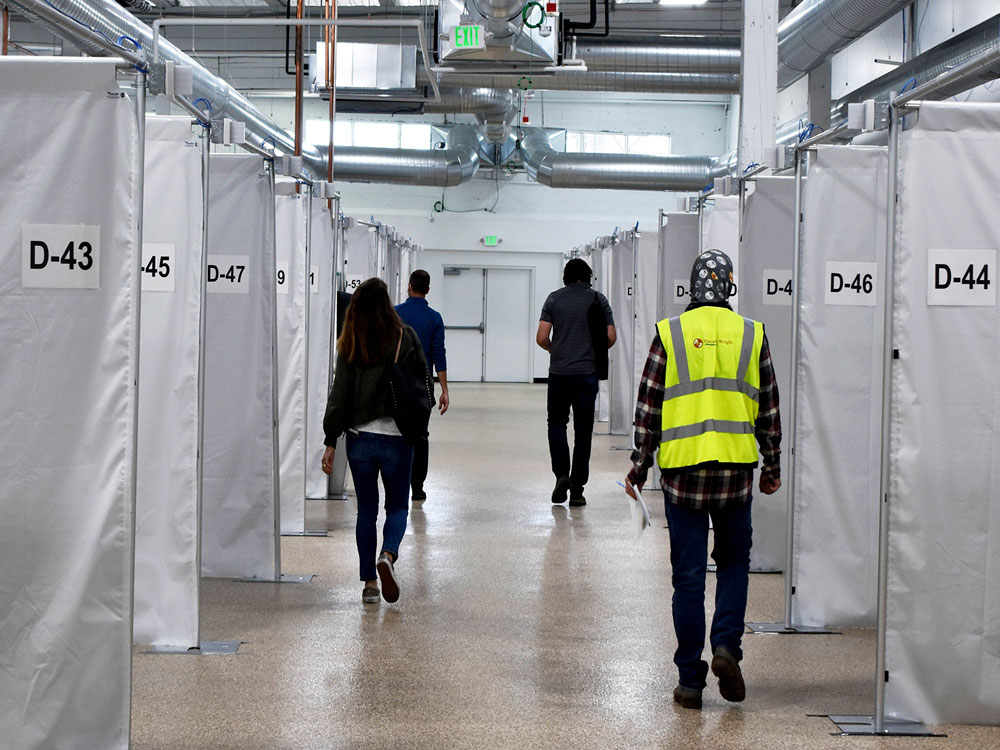
Core Design Team
Firm: DLR Group
Architecture, Planning, Interior Design, FF&E Design, Mechanical Engineering, Electrical Engineering, Structural Engineering
Consultants/Collaborators
Owners Representative: OAC Services
Contractor: Howard S Wright, a Balfour Beatty Company
Architectural Design (Elliott Bay Shelter): Third Place Design Co-operative
Civil Engineers: KPFF Consulting Engineers
Geotechnical Engineering: Associated Earth Sciences, Inc.
Project Narrative
How can the built environment mitigate the effects of an epidemic with rapidly changing parameters?
Rapid-Response Housing in Pandemic Environments:
In February 2020, King County in Washington State became the “epicenter” of the COVID-19 pandemic in the U.S. Within 3 days of the first COVID-19 related death in the area, the County began collaborating with a design firm and a contractor to bring much needed assessment and recovery beds on-line. These beds were not meant to be field hospitals. They were meant to reduce the loads on medical facilities by providing space for those who had no place to quarantine and recover, particularly the homeless population. This type of facility was critical to keeping hospital beds available for those who needed immediate and intensive medical attention.
The design team partnered with the County to deliver 1,400 quarantine, assessment, and recovery beds in various communities within a matter of weeks through rapid assessment, design, and construction methods. From the first meeting it was clear that we were all creating new paradigms in dealing with community health that had never been faced before. The design team transformed the discussions into one about process, outcome success, and staff support creating a framework for decision making, iterative designs, and, ultimately, the best solutions for each situation. This agile team of planners, designers, and technicians created rapid solutions based on evolving knowledge in a world pandemic environment.
The results were 13 projects completed in 95 days, providing over 1,400 beds to serve the most vulnerable citizens in King County.
4 Facility Types were included in this process:
- Homeless Shelter De-Densification Sites
- Assessment Center (AC) and Recovery Center (RC) Sites
- Quarantine locations for those who could not go back to their home (not wanting to expose others or those traveling)
- Support spaces for each site(staff amenities, logistics, property storage, food service, etc.)














